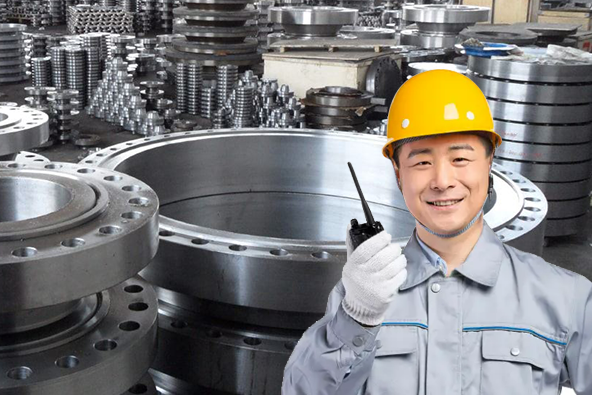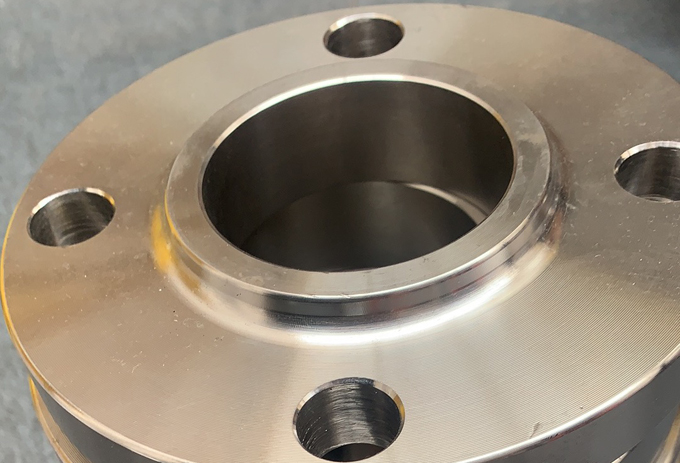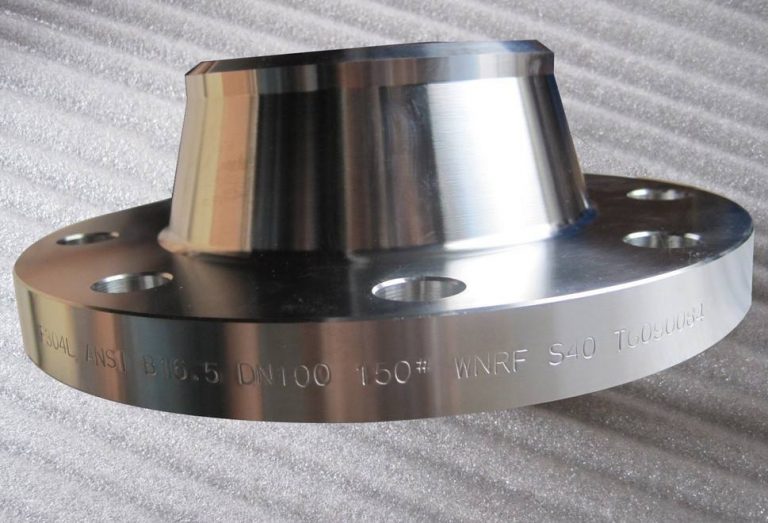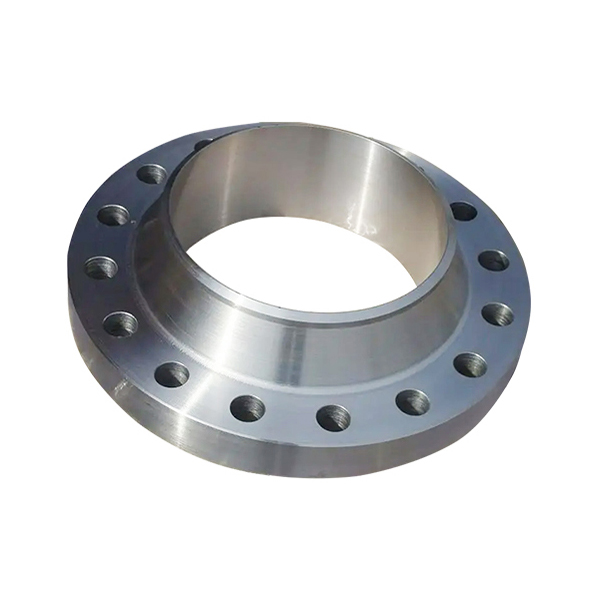In the intricate tapestry of industrial operations, the seemingly humble components known as flanges play a pivotal role in maintaining the integrity and efficiency of various processes. These connectors, often overlooked, form the linchpin of structural stability in pipelines and machinery, underscoring the necessity for meticulous care and attention. As we delve into the realm of flange inspections, we embark on a journey that transcends routine maintenance, delving into the very essence of operational reliability.
At the heart of this exploration is the imperative for regular inspections— an indispensable practice that not only safeguards against potential hazards but also ensures optimal performance and regulatory compliance. In this discourse, we navigate the intricate landscape of flange examinations, elucidating the critical tasks that demand our attention. Amidst the wealth of information, our narrative seamlessly intertwines with the expertise of Yanhao Company, an entity dedicated to advancing the standards of flange solutions without ostentation but with an unwavering commitment to excellence. Join us on this odyssey, where the synergy of knowledge and experience converges to illuminate the path toward safer, more efficient industrial endeavors.
Section 1: Understanding Flanges and Their Significance
1.1 Definition and Functions of Flanges:
A flange is a projecting edge, collar, or ring often utilized in pipes, valves, and similar equipment. Its primary functions encompass facilitating connections, ensuring a tight seal, providing structural support, aiding in alignment, enhancing accessibility for maintenance, resisting pressure, offering versatility, and enabling isolation. Flanges play a pivotal role in piping systems by allowing easy assembly and disassembly, preventing fluid or gas leakage through effective sealing, contributing to the structural integrity of the system, ensuring proper alignment, and facilitating various maintenance tasks. Different types of flanges, such as slip-on, weld neck, socket weld, and blind flanges, are employed based on specific application requirements. In essence, flanges are integral components that contribute significantly to the functionality and reliability of piping systems.
1.2 The Impact of Flange Malfunctions:
Flange malfunctions can have far-reaching consequences, significantly impacting industrial operations. The compromised integrity of a flange, whether due to damage, misalignment, or improper sealing, poses immediate risks such as fluid or gas leakage. This not only jeopardizes the safety of personnel and the surrounding environment but also leads to operational disruptions, unplanned downtime, and potential equipment damage. The environmental ramifications of leaks, including contamination and the need for extensive cleanup, further underscore the importance of addressing flange malfunctions promptly. Beyond immediate consequences, the financial toll of increased maintenance costs, regulatory compliance issues, and the potential erosion of a company’s reputation necessitate a proactive approach to inspection, maintenance, and adherence to industry standards to ensure the reliability and safety of piping systems.
Section 2: The Importance of Regular Flange Inspections
2.1 Overview of Routine Inspections:
Routine inspections stand as the proactive guardians of industrial fluidity. This section offers a comprehensive overview of why regular examinations of flanges are indispensable in preventing failures. From detecting early signs of wear and corrosion to ensuring optimal performance, the benefits of a systematic inspection regimen are dissected, highlighting its role in averting potential disasters and prolonging the lifespan of critical industrial components.
2.2 Risks Associated with Neglecting Flange Maintenance:
Neglecting flange maintenance poses several significant risks that can have adverse effects on industrial operations, safety, and overall system reliability. Some key risks associated with neglecting flange maintenance include:
- Leakage: Inadequate maintenance increases the risk of flange leaks, leading to the escape of fluids or gases. This not only compromises the integrity of the piping system but can also result in environmental hazards, safety risks, and regulatory non-compliance.
- Safety Hazards: Neglected flanges can contribute to safety hazards by allowing the release of hazardous materials. This poses a direct risk to personnel working in the vicinity, potentially leading to accidents, injuries, or exposure to harmful substances.
- Environmental Impact: Flange leaks due to neglect can result in environmental contamination, affecting soil, water sources, and ecosystems. This environmental impact can lead to legal and financial consequences, including fines for regulatory non-compliance.
- Operational Disruptions: Failure to conduct regular maintenance increases the likelihood of unexpected flange malfunctions, necessitating unplanned shutdowns for repairs. This can disrupt regular operations, leading to financial losses, decreased productivity, and missed production targets.
- Equipment Damage: Neglected flanges may contribute to the deterioration of connected equipment within the piping system. This can lead to additional repair costs and potential failures of critical components.
- Increased Repair Costs: Deferred maintenance often results in the escalation of minor issues into major problems. Neglecting flange maintenance may lead to more extensive and costly repairs, negatively impacting the overall maintenance budget.
- Loss of Productivity: Unplanned downtime due to flange malfunctions can result in a loss of productivity. Industries relying on continuous processes may face delays in production schedules and the fulfillment of customer orders.
- Regulatory Non-Compliance: Neglecting flange maintenance can result in non-compliance with industry regulations and standards. This may lead to legal consequences, fines, and damage to the reputation of the organization.
To mitigate these risks, it is essential to establish a proactive flange maintenance program. Regular inspections, preventive maintenance measures, and adherence to industry best practices can help identify and address potential issues before they lead to more significant problems. By prioritizing flange maintenance, organizations can enhance safety, ensure environmental compliance, and maintain the reliability of their piping systems.
Section 3: Key Tasks in Flange Inspections
Flange inspections involve a series of key tasks aimed at assessing the condition, integrity, and functionality of flanges within a piping system. These tasks are essential for identifying potential issues, ensuring proper performance, and preventing failures. The key tasks in flange inspections include:
- Visual Inspection: Conduct a thorough visual examination of the flange surfaces, looking for signs of wear, corrosion, cracks, misalignment, or any visible damage. Visual inspections are crucial for identifying issues that may impact the structural integrity and sealing capability of the flange.
- Gasket Examination: Inspect the condition of the gasket, which plays a critical role in maintaining a tight seal between flange faces. Look for signs of compression, deterioration, or misalignment that could compromise the effectiveness of the gasket.
- Bolt Inspection: Check the condition and tightness of bolts securing the flange. Ensure that bolts are properly torqued, and look for any signs of corrosion, deformation, or damage. Loose or damaged bolts can lead to flange misalignment and leakage.
- Flange Alignment: Verify that the flanges are aligned correctly. Misalignment can result in uneven stress distribution, potentially leading to leaks or structural issues. Proper alignment is crucial for the effective functioning of the flange connection.
- Ultrasonic Testing: Utilize ultrasonic testing to assess the thickness of flange components, especially in critical areas. This non-destructive testing method helps identify potential thinning or degradation of the material due to corrosion or other factors.
- Magnetic Particle Inspection (MPI): Use MPI to detect surface and near-surface defects such as cracks or fractures in the material of the flange. This method is particularly useful for ferromagnetic materials.
- Penetrant Testing: Apply penetrant testing to identify surface-breaking defects in non-ferromagnetic materials. This method involves applying a liquid penetrant to the surface, which seeps into any surface cracks or defects.
- Pressure Testing: Conduct pressure testing to evaluate the flange’s ability to withstand the operational pressures it will encounter. This may involve hydrostatic or pneumatic testing to verify the integrity of the flange under different pressure conditions.
- Material Verification: Confirm the material specifications of the flange and verify its compatibility with the fluids or gases it will handle. Ensure that the flange material is suitable for the intended service conditions.
- Documentation Review: Review documentation related to the flange, including previous inspection reports, maintenance records, and material certificates. This helps track the history of the flange and informs decisions about maintenance or replacement.
Regular and systematic flange inspections, incorporating these key tasks, are essential for maintaining the reliability, safety, and efficiency of piping systems. Implementing a proactive inspection and maintenance schedule helps identify and address issues before they escalate, reducing the risk of leaks, downtime, and potential safety hazards.
Section 4: Industry Standards and Compliance
Industry Standards for Flange Inspections:
Adhering to recognized industry standards is crucial for ensuring the integrity and reliability of flange inspections. Key standards that are relevant to flange inspections include:
- ASME B16.5 – Pipe Flanges and Flanged Fittings: This standard from the American Society of Mechanical Engineers (ASME) outlines the dimensions, tolerances, materials, and testing requirements for pipe flanges and flanged fittings, providing a comprehensive guide for inspection protocols.
- API 6A – Specification for Wellhead and Christmas Tree Equipment: Developed by the American Petroleum Institute (API), this standard specifically addresses flanges used in the oil and gas industry. It provides guidelines for material selection, design, manufacturing, testing, and inspection of wellhead and Christmas tree equipment.
- ASTM E709 – Standard Guide for Magnetic Particle Testing: This ASTM International standard provides guidelines for using magnetic particle testing to detect surface and near-surface defects in ferromagnetic materials, which is relevant for inspecting flanges.
- ASTM E165 – Standard Practice for Liquid Penetrant Examination for General Industry: This ASTM standard outlines procedures for liquid penetrant testing, a method used to identify surface-breaking defects in non-ferromagnetic materials, making it applicable to the inspection of various flange materials.
Importance of Regulatory Compliance:
Regulatory compliance is paramount to ensure the safety, environmental responsibility, and reliability of industrial operations. Compliance with industry regulations, such as those set by occupational health and safety agencies and environmental protection authorities, is crucial in the context of flange inspections. Failure to comply with these regulations can result in legal consequences, financial penalties, and reputational damage.
Yanhao’s Commitment to Industry Standards:
Yanhao is unwavering in its commitment to delivering flange products that not only meet but exceed industry standards. Our dedication to precision engineering aligns with established standards such as ASME B16.5 and API 6A. By prioritizing compliance with these standards, Yanhao ensures that our flange solutions undergo rigorous inspections and testing, contributing to the safety, efficiency, and longevity of piping systems in various industries. Our commitment extends to continuous improvement, staying abreast of evolving standards, and integrating the latest technologies to provide flange products that consistently meet the highest quality and safety requirements.
Section 5: Proactive Flange Maintenance Strategies
Proactive Flange Maintenance Strategies:
Establishing a proactive maintenance schedule for flanges is essential to prevent unexpected failures, enhance reliability, and extend the operational life of piping systems. Key proactive maintenance strategies for flanges include:
- Regular Inspections: Implement routine visual inspections to assess the condition of flanges, focusing on wear, corrosion, gasket integrity, bolt tightness, and overall alignment. Regular inspections help detect issues early and allow for timely corrective measures.
- Scheduled Testing: Conduct non-destructive testing methods, such as ultrasonic testing, magnetic particle inspection (MPI), and penetrant testing, at predetermined intervals to evaluate the structural integrity of flanges. This helps identify hidden defects that may compromise performance.
- Bolt Torque Checks: Periodically check and retorque bolts to ensure they are tightened to the specified torque values. Proper bolt tension is crucial for maintaining the integrity of flange connections and preventing leaks.
- Gasket Replacement: Plan for scheduled gasket replacements based on the manufacturer’s recommendations and the specific service conditions. This helps maintain an effective seal and prevents leaks.
- Alignment Verification: Verify flange alignment during maintenance activities to ensure that the mating surfaces are properly aligned. Misalignment can lead to uneven stress distribution and affect the overall performance of the flange.
- Corrosion Protection: Implement corrosion protection measures, such as coatings or inhibitors, to safeguard flanges from corrosion. Regularly assess the effectiveness of these measures and reapply as needed.
- Documentation Management: Maintain comprehensive records of all maintenance activities, including inspection reports, testing results, and any repairs or replacements performed. Documentation facilitates tracking the history of each flange and informs future maintenance decisions.
Yanhao’s Approach to Proactive Maintenance:
Yanhao adopts a proactive approach to flange maintenance, recognizing the critical role these components play in industrial processes. Our proactive maintenance strategies are tailored to meet the specific needs of each client and their unique operational environment. We prioritize:
- Customized Solutions: Yanhao provides customized flange solutions that align with the operational requirements and conditions of our clients. Our products are engineered to withstand diverse environments and service conditions, minimizing the need for unplanned maintenance.
- High-Quality Materials: We use high-quality materials in the manufacturing of our flanges, ensuring durability and resistance to wear and corrosion. This contributes to the longevity of the flange components and reduces the frequency of maintenance interventions.
- Continuous Improvement: Yanhao is committed to continuous improvement, staying abreast of technological advancements and industry best practices. This commitment allows us to offer innovative solutions and incorporate the latest developments in flange maintenance and reliability.
By combining a proactive maintenance schedule with customized solutions and a commitment to quality, Yanhao aims to enhance the performance and longevity of flanges, ultimately contributing to the efficiency and safety of industrial processes.
Section6: FAQS
Common Questions and Answers Regarding Routine Flange Inspection and Maintenance:
- Question: What should be done if there are signs of rust or corrosion on the flange surface?
- Answer: Regularly inspect the flange surface for signs of rust or corrosion. If detected, take measures to remove the rust and consider applying appropriate coatings or corrosion prevention methods to prevent further corrosion.
- Question: How to address leakage at the flange connection?
- Answer: Leakage may be caused by loose bolts, worn gaskets, or misaligned flanges. Begin by checking and tightening bolts appropriately, then consider replacing gaskets or realigning the flanges.
- Question: If bolts near the flange are damaged, what steps should be taken?
- Answer: Damaged bolts can affect the stability of the flange connection. It is recommended to promptly replace the damaged bolts and ensure the use of new bolts that comply with specifications.
- Question: What if there are scratches or wear on the flange sealing surfaces?
- Answer: Scratches or wear on the sealing surfaces may affect the sealing performance. Evaluate the extent of damage; if severe, consider grinding or machining the surfaces and ensure the use of appropriate sealing materials.
- Question: Is lubrication required for flanges on a regular basis?
- Answer: It depends on the specific application. Flanges operating in special environments or under high-temperature and high-pressure conditions may require periodic checks and lubrication to ensure bolt smoothness and flange connection stability.
- Question: How can rusting of flange bolts be prevented?
- Answer: Regularly inspect the surface of flange bolts to ensure they are free from rust. Consider using stainless steel bolts or applying rust-resistant coatings to enhance corrosion resistance.
- Question: Does fluctuating environmental temperature impact flange performance?
- Answer: Significant temperature fluctuations can potentially affect flange performance. In such cases, it’s essential to select flange materials suitable for the specific temperature range and ensure that the flange design can withstand temperature variations.
- Question: Is there a specific order for installing flanges?
- Answer: Yes, the installation order of flanges is crucial. Typically, it is recommended to follow the specified bolt tightening sequence. This ensures even and stable flange connections.
Note: The provided answers are for reference, and specific maintenance issues and solutions may vary based on flange type, application environment, and regulatory requirements. Therefore, when conducting routine flange inspections and maintenance, it is advisable to consult the relevant flange usage and maintenance manuals to ensure compliance with specifications and best practices.
Lewis Liu
Hello, I am Lewis Liu, a professional sales engineer with over ten years of experience in the flange fittings industry. I am highly knowledgeable in flange selection, installation, and maintenance. I am passionate about providing customers with the best solutions to ensure their pipeline systems run smoothly, safely, and reliably.
If you have any questions or concerns regarding flange fittings for your pipelines, whether it’s about selection, material choice, specification requirements, or any other aspect, please feel free to contact me at any time. I am committed to offering professional advice and assistance to help you make informed decisions and meet your needs.




